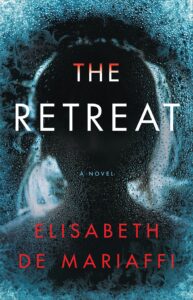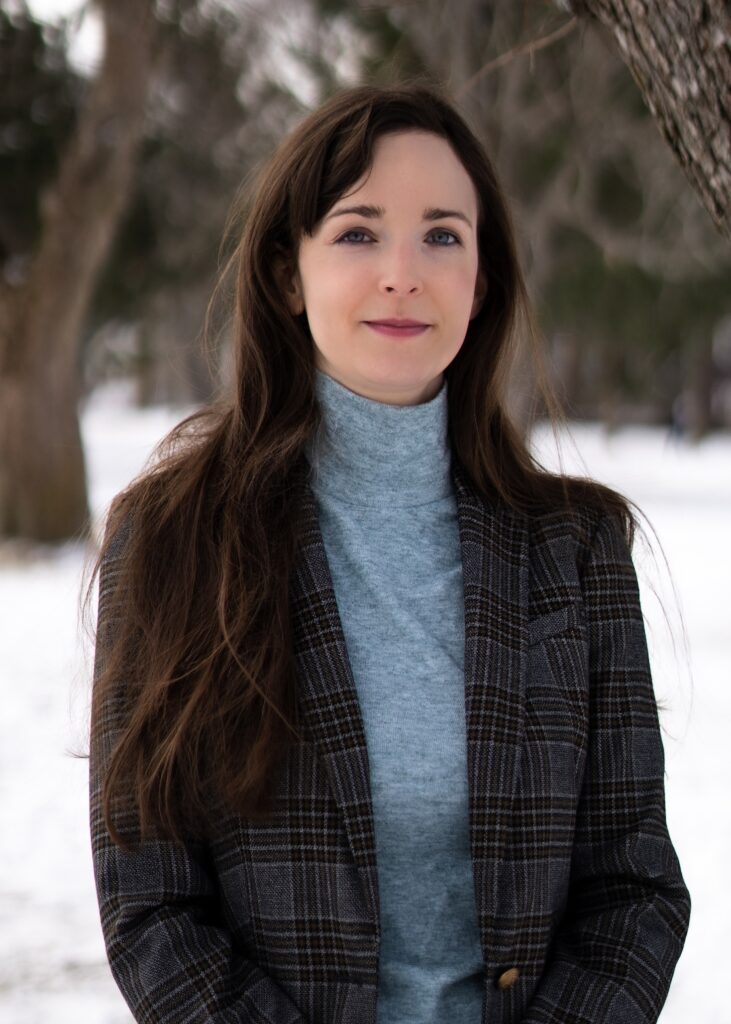Elisabeth de Mariaffi: “Any thriller is a survival story”
July 2021
Even in the opening pages of The Retreat, the stakes are already so high for your main character, Maeve. She’s recently out of an abusive marriage, she’s away from her kids for the first time and they’re staying with her awful and untrustworthy mother, and she’s betting so much on this grant-funded in-depth workshop period rekindling and redirecting her creative flair. I guess that’s not a question, but perhaps you can comment on the emotional and psychological pitch a story like this demands from the get-go.
I really love the way you have phrased this. You know, I think in this kind of story – any thriller is really a survival story – the stakes have to be there for the protagonist before things go awry. So, it doesn’t matter if you have a couple on the verge of separation going to a wedding, or a man secretly on the verge of bankruptcy who ends up on the floor during a bank robbery – the character is bringing something with them to the experience, as we all do.
With Maeve, I really wanted to illustrate the stakes of even choosing this career in the arts – in her case, in dance. So, she’s a single mother in a financially precarious place in her life. Her career as a performer has been so sharply coloured by a past marriage that was abusive, but also, her husband was the artistic director of the company she danced in, which indicates a whole other level of control. Then, her second child is born by C-section, and that surgery is a career-ender for a professional dancer. The core muscles are damaged in a way that cannot be recovered. So, here she is: she has lived her whole life for this very physical career, and sustained physical damage that took it all away from her. Dance is the only thing she knows, and she cannot keep performing, so she must change to survive.
This the point at which we meet Maeve: she has this once chance left. And then things go awry.

Yes: catastrophe, isolation, a cohort of strangers forced to co-operate or perish. Is it ok to call this a classic genre set-up? If so, what horror books/films have you been reading/watching?
I think The Retreat really falls into the Locked Room genre – we take this small handful of strangers with only one thing in common, and we trap them together; when things start to go wrong, they are all forced to realize the problem is one of the very people in the room with them.
I love a locked room. Some really famous examples would be Agatha Christie’s And Then There Were None, a story in which a group of strangers are all called to a small, remote island by a mysterious letter-writer—and then one by one, they start to die. Another more nuanced locked room is her Murder on the Orient Express—a murder is committed on a moving train, and the passengers all become suspects. Some of my favourite movies are riffs on this same concept: The Shining, where a family is literally snowed in at a mountain lodge, much like the artists in The Retreat—or even maybe my all-time favourite winter-themed movie, John Carpenter’s The Thing, which takes place at a remote research station in Antarctica—hard to get more isolated than that!
Maeve’s rehearsal/choreographic process reads so authentically (ditto her body issues re: injuries and weight). How did you delve so deeply and realistically into the language and strictures and physicality of dance?
Well, I don’t have a dance background myself. But I am lucky enough to have a couple of friends who do, so the first thing I did was ask questions. My friend Bianca Spence (to whom the book is dedicated) actually trained at Alvin Ailey when she was young, and I used to send her little video clips of dancers and literally ask: “If you are doing this, if you’re the dancer, what is going through your mind?” Another friend now runs a dance company in Toronto—Sore for Punching You—in part because, you guessed it, she had an unexpected C-section that ended her performance career. She was very generous and shared some self-tape video of herself at an arts residency, generating original work. So I got to see what that looks like in a very intimate way.
And while I am not a dancer, I have been a long-distance runner for over thirty years now, and I practice yoga mostly to counteract the damage that a lifetime of running can cause. So many of the non-dancing physical moments that Maeve has, of stretching and hearing the pops and grinds and clicks in her joints—that’s just me. There’s a scene where she recalls a chiropractor taking an infra-red photo of her spine and showing her where the vertebrae would fuse together when she was older, and that happened to me, too, when I was in my early 20s. It’s why I do the yoga.
The wildlife around the Center effectively reflects and presages much of the tension and suffering within. Have you spent time at a place like High Water, observing the animals around it?
The very earliest beginning of this novel was a short story that I started writing when I was at the Banff Centre for the Arts in 2009. I abandoned the story but left it in a file, and I always came back to it in my mind. I was there in October, which is a little earlier in the season than Maeve, but winter really did come in early – it dipped down to minus 20, there was snow, things change so quickly in the mountains.
One of the things that makes Banff so special is that you’re in the middle of a national park and the animals are just trying to live their lives, and you’re the one getting in the way. So, the bear warning signs are everywhere. I remember running along the Bow river and seeing a fawn caught in a fence, two other deer pacing nervously until it was free – then they paced me, running alongside, for half a kilometre or so. It’s incredibly special and can also be incredibly dangerous. Like Maeve, I was in the mountains during the elk rutting season. Staff warned us more seriously about elk than bears. The elk can be very dangerous at that time of year.
So, dodging spoilers here – things go sideways pretty quickly, and people get hurt. How can an author do those things to her characters? At what point in your writing do you know a character’s fate?
I really wanted to bring that And Then There Were None feel to this story, so I knew bad things were going to have to happen, but as I was working and plotting, I would honestly feel so much sorrow when I realized what needed to happen next. I did a fair amount of planning on The Retreat, so I had a good idea of the story even as I began writing, but as you move along things change and you feel the stakes spike and that is both exciting and terrible. I think if it feels both exciting and terrible, I know I’m getting it right.
The book’s obvious literary merits aside, this seems tailor-made for film adaptation. Any interest?
I really wanted to write a book for Maeve in which she got to have some very big, cinematic, survival moments. Her entire life has been physical, you know? And I think so often, when we put women in big stories, we take that moment away from them. I wanted it to be fast-paced and high-energy, and yes, I think it would make a great movie. I’d love to see it on screen.
The Retreat is available from Harper Collins Canada (23.99)



